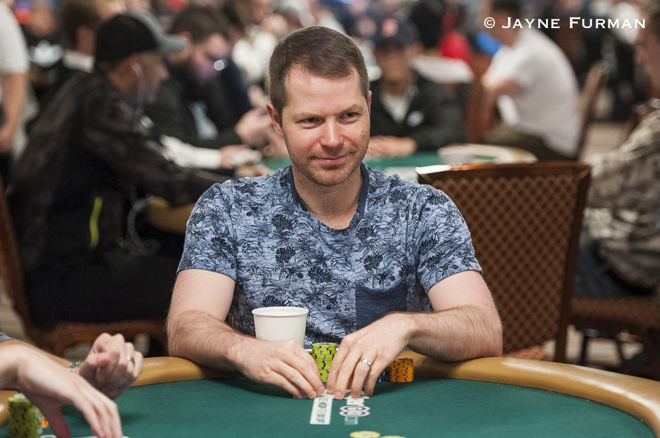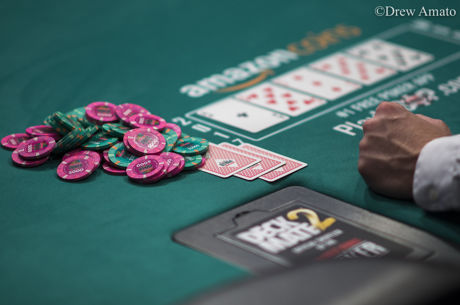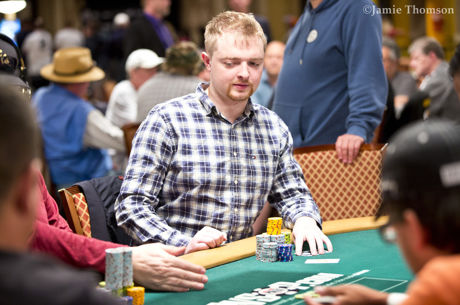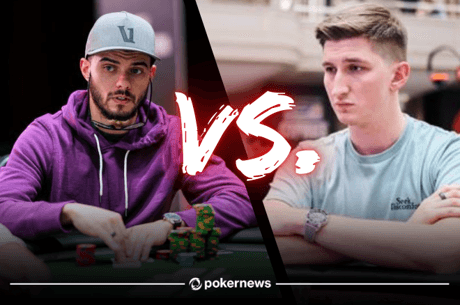Navigating Top Pair with a Bad Kicker Blind Versus Blind

This week's hand is an interesting one that came early in a $7,500 buy-in World Poker Tour event — a deep-stacked, blind-versus-blind hand in which I had to deal with being out of position and facing postflop pressure from my opponent.
The blinds were 100/200 with a 25 ante, and it folded to me in the small blind where I had about 26,000 and was dealt A♥5♠. I chose to limp, something I've begun doing more often with a wide range versus competent opponents in the big blind.
My opponent had a bit more than me to start and he checked. The flop came A♠7♦4♣, giving me top pair with a weak kicker. With 625 in the middle, I bet 225, and my opponent called.
The turn was the 8♦, which if you think about it wasn't good for me, because it is one of the cards that likely improves my opponent's flop-calling range (i.e., eights, sevens, sixes, fours, and threes).
I checked, the big blind bet 500 (about half the pot), and I called. The river then brought the K♠ and I checked once more, then my opponent bet 1,500 into the pot of just over 2,000.
I had a decision to make. Look at what I did and listen to my thought process as I talk back through the hand:
Somehow I found a fold here despite it being what looks like a safe board. What would you have done? Would you simply bet all three streets with top pair, or would you take the cautious route?
Jonathan Little is a professional poker player and author with over $6,500,000 in live tournament earnings. He writes a weekly educational blog and hosts a podcast at JonathanLittlePoker.com. You can follow him on Twitter @JonathanLittle.









